Portland is known for some really cool stuff, including being the home of stop-animation film studio LAIKA. While only just over 10 years old, LAIKA is the animation studios behind this summer’s film Kubo and the Two Strings, as well as some other incredible (and award-winning films) such as Coraline, ParaNorman, and The Boxtrolls. Being a local, I’m lucky to have such an incredible animation studio in my backyard. Last month, I had the pleasure of spending a day at the animation studios to learn all about their upcoming feature Kubo and the Two Strings.
Kubo and the Two Strings tells the story of a boy with magical powers who sets out on a quest to save his family while solving the mystery of his fallen father after summoning a spirit from his past. While at LAIKA we saw a clip and the movie looks excellent. All of LAIKA’s films are original stories and this one is bound to be just as fabulous as all of the previous ones we’ve seen. The use of original stories is just one of the many components that makes what LAIKA does so unique.
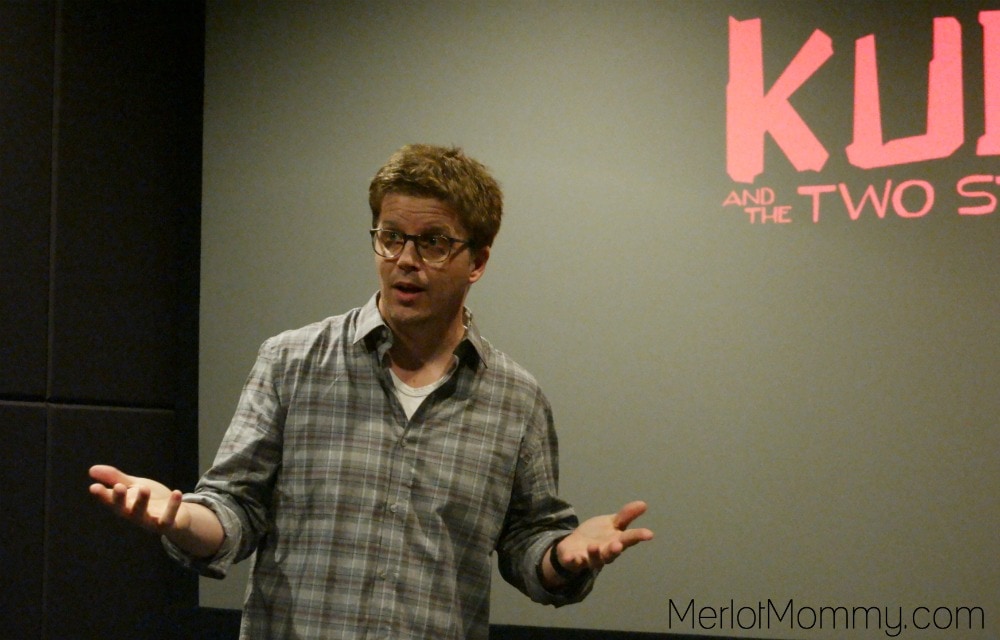
Steve Emerson, VFX Supervisor at LAIKA
LAIKA has its own visual effects (VFX) department, which means they do their own effects in-house and they don’t farm out the work. Steve Emerson is the VFX Supervisor and he talked to us a bit about the visual effects used in the movie. I’ve seen Steve talk before. He always gives a talk at Portland ComicCon so my kids and I always make sure to hear his session (and any LAIKA sessions we can sit it on) because they have such a unique flair. The VFX department works very closely with the stop-motion teams to ensure the most lifelike hybrid animation they can create. While the movie still used lots of CGI and other digital effects, at its core Kubo and the Two Strings is a stop-motion animation film. When Steve started with LAIKA back when they were creating Coraline, very little was digital in that everything you see was actually on camera. Digital enhancements were basically only used to clean up riggings and lines and such. ParaNorman was more a hybrid with a combination of puppets and some digital effects. In Kubo and the Two Strings, the movie is almost all digital outside of the sets and hero puppets (or main characters). The majority of crowds and fill-ins are digitally created.

Village set for Kubo and the Two Strings at LAIKA
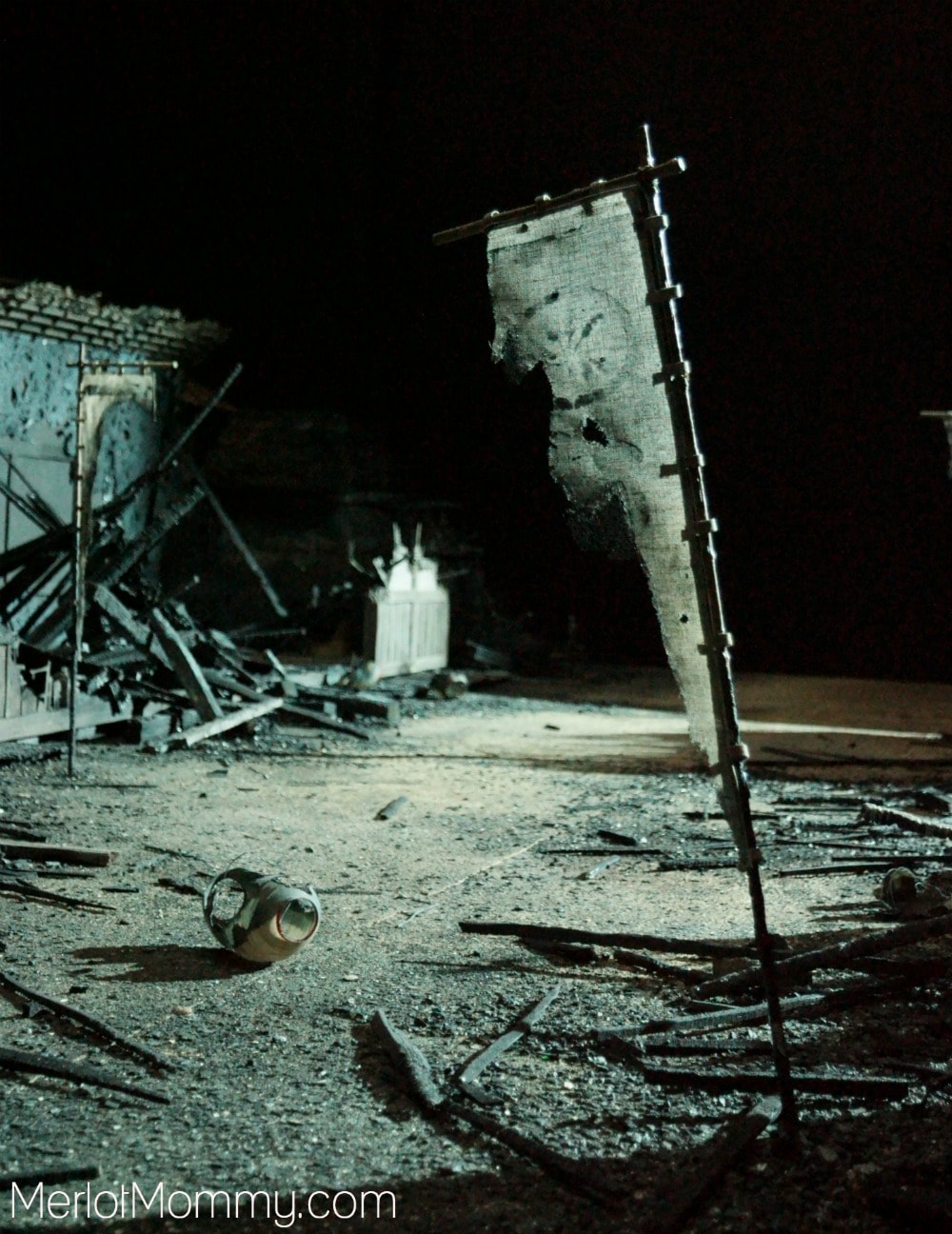
Destroyed Village Set for Kubo and the Two Strings at LAIKA
Each time LAIKA does a movie, they get more ambitious and challenge themselves a bit more. They raise the bar with each movie. Producer Arianne Sutner said that Kubo and the Two Strings was a big challenge for them because of the size. They took on creating large-scale puppets and the sets were huge compared to any they had done in the past. The small village, for example, was nearly 80 feet long when fully assembled and one of the character puppets was 25-feet tall.
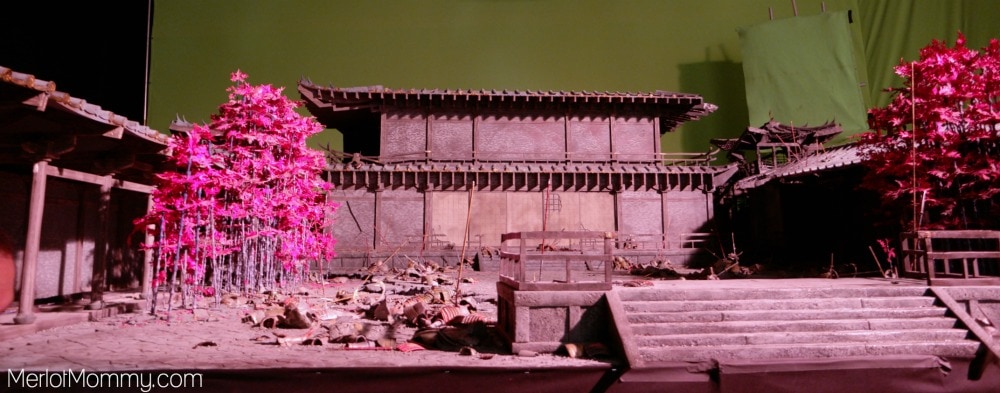
Full-Scale model

Small-scale model of building above
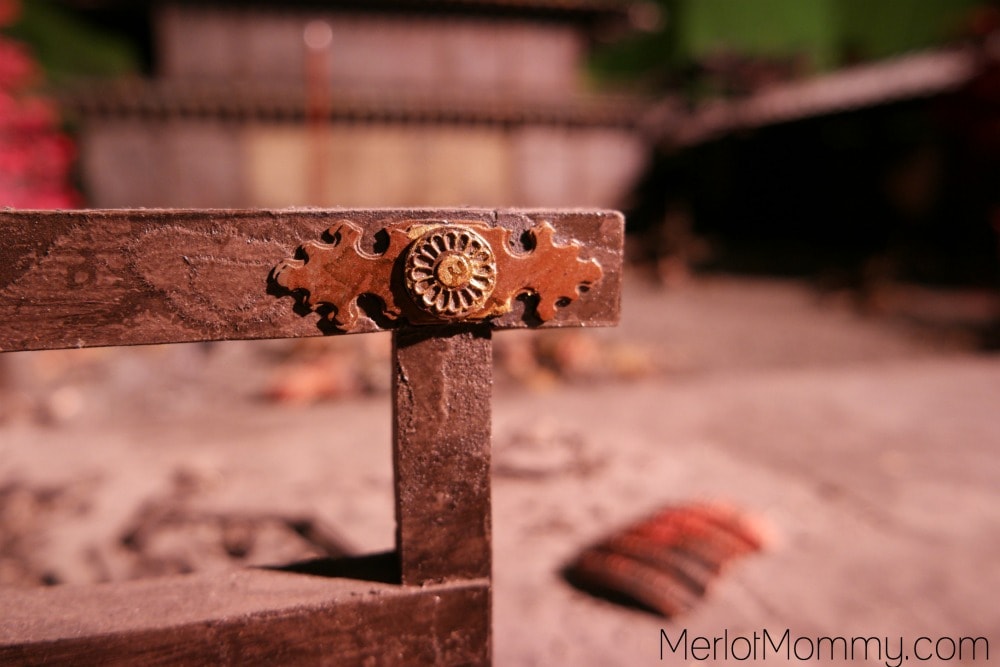
Some of the detail is just incredible in these sets!
Because of the scale, they made several sets that had models with smaller scale sets for certain scenes that would include the entire building within it. They also had to figure out how to animate a 25-foot-tall skeleton, which was something they had never done before. It was the largest stop-motion animation puppet ever built.
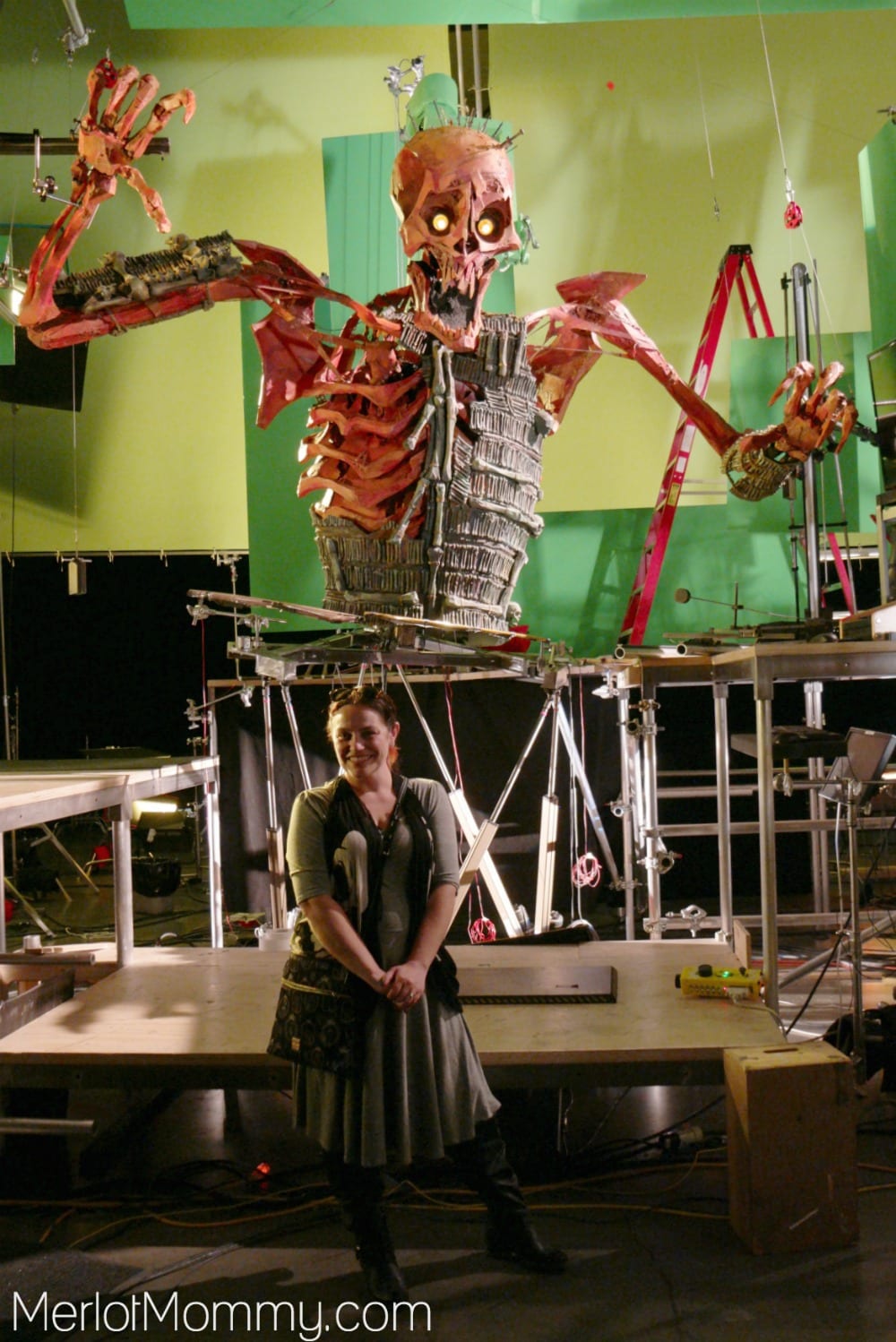
Hollow Bones is huge! And that’s just half of him!
The skeleton, Hollow Bones, is built on a device called a hexapod that allows the puppet to tilt as needed and its arms are on a pulley system to allow the puppeteer to position the puppet’s hands and still allow the skeleton’s arms and elbow follow a natural flow of movement so it looks as much as possible like a real arm. If fully assembled, the skeleton is too tall for the room (even though the room is in a warehouse building) so the legs are actually a separate section).
In the scene with Hollow Bones, LAIKA opted to make the skeleton stop-motion animated rather than a CGI character but made the octagonal room it is in CGI. They built one wall and then replicated it digitally.
The rest of the day we visited multiple of other sets as well. The detail that goes into these sets is unreal. Art Director Rob DeSue talked to us about the props used in the film. The details on these teeny weeny props is unbelievable!! The visual complexity is stunning but necessary for the believability of the film. The woodblock print art of Kiyoshi Saitō is one of the main artistic inspirations for this film. Many of the props have a woodblock texture printed on them, but what is interesting to note is that often the textures do not follow the contours of the object. So for example, you may find that vertical or horizontal lines carry across uneven surfaces.

The large “origami” props are about the size of a small Shopkins.
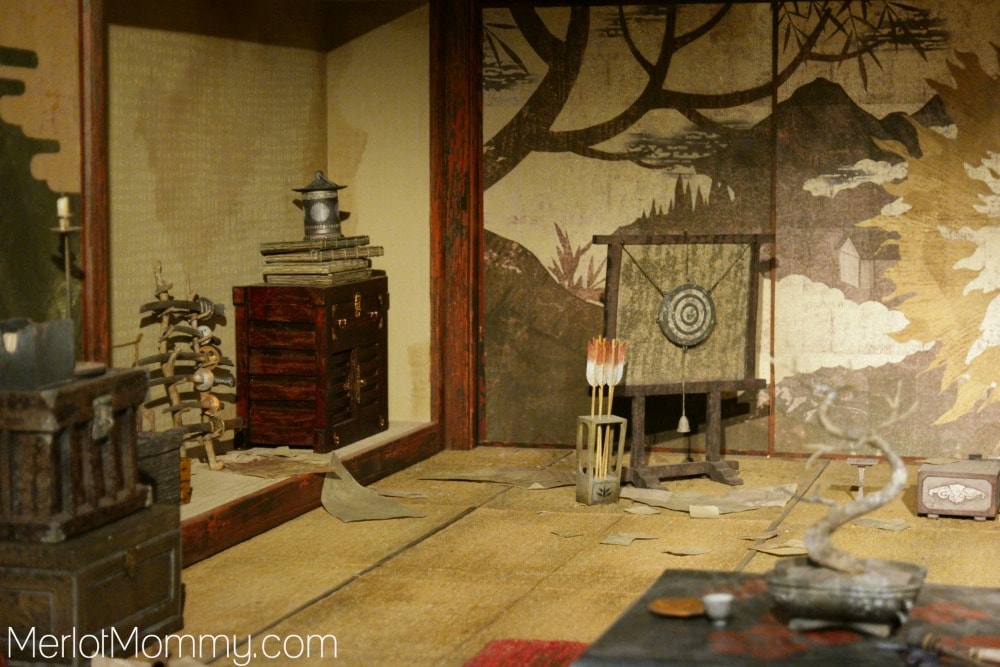
This is a close up of some of the props in the room below

The stringed instrument is about the height of an iPhone 6s.

Check out this B-roll footage of LAIKA and what they do!
Check back for more posts of our visit of LAIKA. I’ll be talking about costuming and puppet design soon! And next week my contributer Bridget will be at the press junket in LA!
Focus Features will release the new movie from animation studio LAIKA nationwide on August 19, 2016.
- Finding Calm in the City That Never Sleeps - September 24, 2025
- Different Reasons to Consider Using a Therapist in New York - March 12, 2025
- Is a Micro Wedding the Dream You Didn’t Know You Had? - February 14, 2025

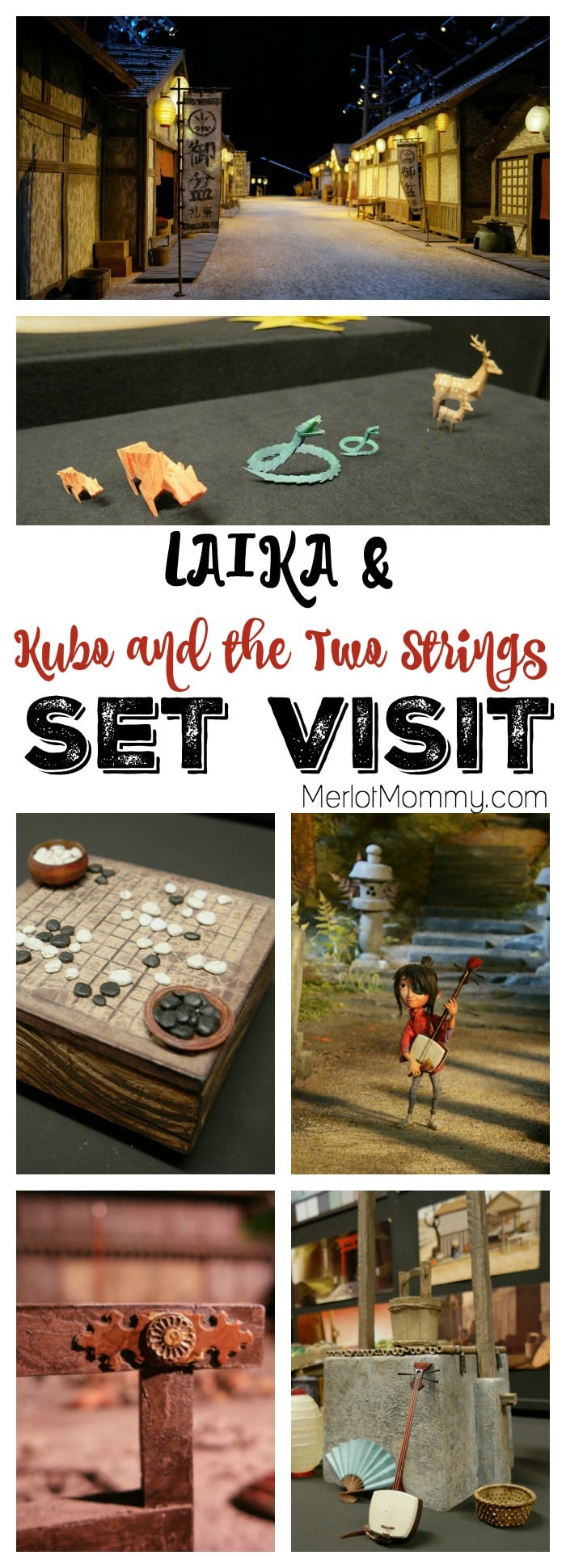





This is all so interesting and I love having a behind the scenes type of look!
This movie looks amazing, & I can’t believe it’s made here!